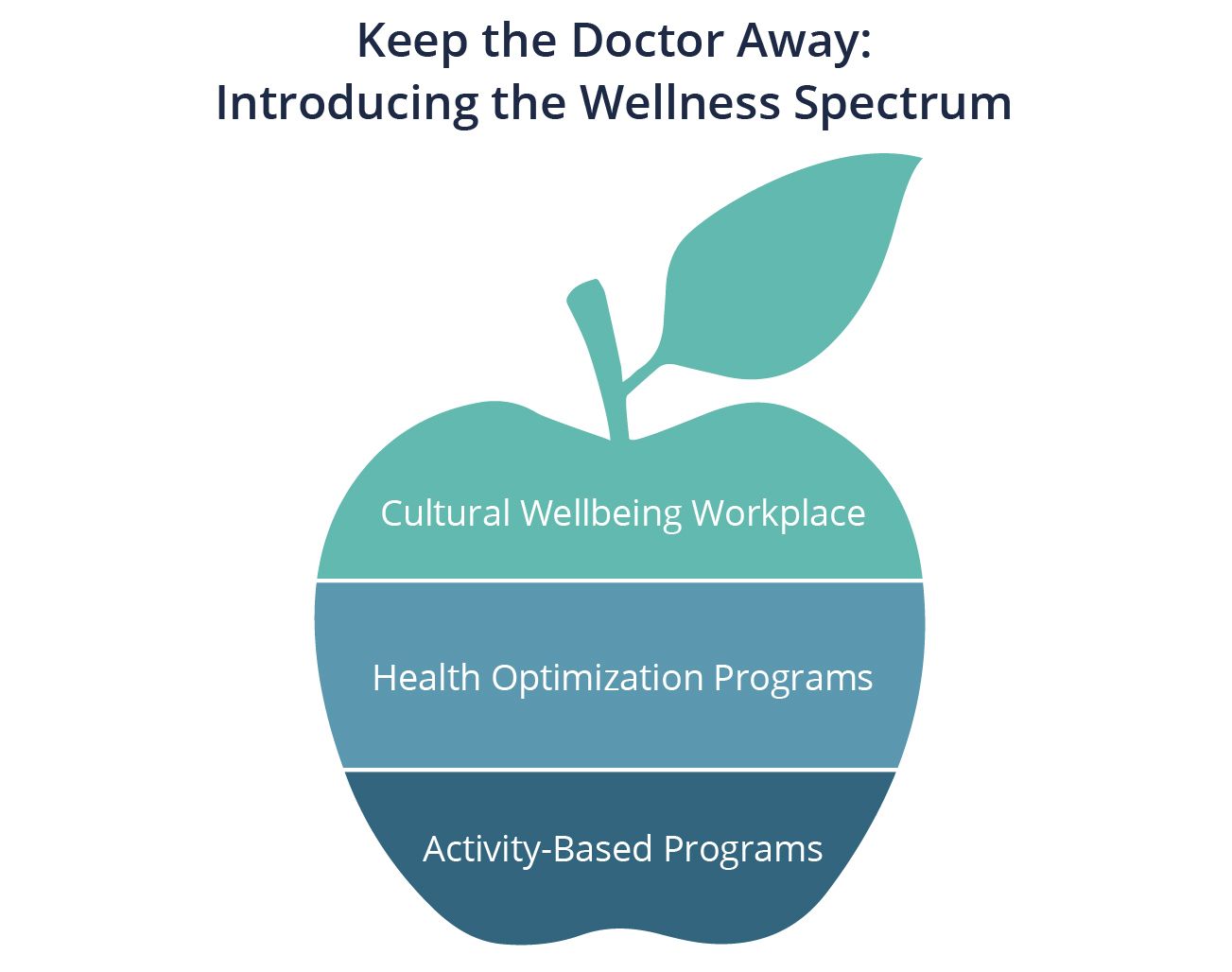Blog
Understand the Wellness Program Spectrum Before You Begin Your Wellness Strategy
The term "wellness" when used to define an employer-based program or strategy can create a very different vision or reference by company. Gone are the days where wellness programs simply consisted of a discounted gym membership, a few flyers on nutrition, and a lunch-and-learn about how to manage stress. Today there are numerous programs that involve all of this and more, from data tracking of health conditions to corporate policies and initiatives geared toward work-life balance.

While there are a variety of services available today, ranging from the traditional wellness program to new and innovative approaches, it can be difficult to understand which ones would be a good organizational fit. In addition to corporate goals, a program has to factor in the organization's ability to implement from a cultural and operational standpoint, from how much experience the employer has with wellness to driving employee acceptance. When it fits the employer's readiness, a wellness program can begin to take shape.
This is where understanding the Wellness Program Spectrum comes in. In this blog post, I'll dive into the concept of the Wellness Program Spectrum as a prerequisite to formulating a wellness strategy.

There are three parts to the Wellness Program Spectrum, each with their specialized focus. They include:
- Activity-based programs: These initial programs allow employers to engage employees, respond to market pressures from competing employers, and raise health awareness for both employees and the organization. They introduce the concept of "wellness" throughout the organization and are measured by participation, activities, and occasionally financial results. Examples include step tracking programs and activity monitors, which serve as a great start to get employees up and moving, as well as healthy eating and weight management programs.
- Health optimization programs: These programs focus on improving chronic and catastrophic conditions for employees and dependents. They are in place to detect and reduce risk in your population, improve health, manage high-cost claimants, create the right access points for acute care, and promote prevention for those who don't have major issues. These programs are typically measured by health risk improvement, claims reduction, and trend analysis and are heavily dependent on participant adherence. Many companies start with an assessment tool and paired with claims data implement condition specific programs for prevalent diseases such as diabetes or asthma. We are seeing more employers promote telemedicine and explore "near site" or "onsite" provider access options.
- Cultural wellbeing programs: Starting with the CEO, these mission-based programs can transform every aspect of the organization. Hiring practices focus on the employee experience and wellbeing includes physical, financial, community, spiritual, and charitable health. These programs support talent recruitment and retention, address overall workforce engagement, and are measured by productivity, turnover, retirement preparedness, and outcome metrics, as well as other company-determined objective and subjective factors.
Not Siloed, But Integrated with Your Corporate Objectives
It's important to note that wellness initiatives are not standalone programs. They are influenced and implemented with your corporative objectives and other evolving strategies. Consumerism has great influence and employees want options that cater to their individual lifestyles and support their diverse family members.
The employee lifecycle also has significant impact. Today's workplace includes young adults, new families, the middle-aged sandwich generation, and pre-retirement and retirees, all with different wellness needs. You should consider a multigenerational approach to address different stages of life.
Keep the Wellness Program Spectrum in mind as you begin to plan for organizational wellness. It will help you determine how to make your wellness program meet your objectives and "meet you where you are" as an organization. It will also help you create a clear roadmap to implementing your program and measuring results. In Woodruff Sawyer's upcoming 2019 Employee Benefits Looking Ahead Guide, we'll go into more depth about how to get started in creating a wellness program, including creating a roadmap.
Pursuing wellness programs requires money, time, and effort to succeed, but the results are worth it. Organizations willing to put in the work have been able to increase employee engagement, lower healthcare costs, increase productivity, and enhance culture over time.
To keep up with Employee Benefits in 2019, check out our upcoming Woodruff Sawyer webinars.
Table of Contents








